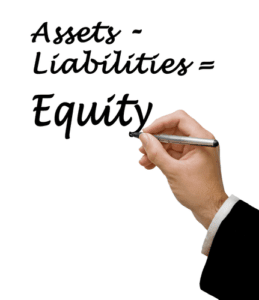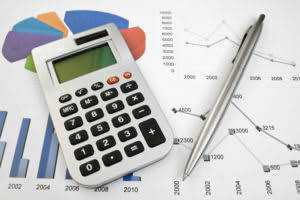Bookkeeping
What is a general ledger account?

A control account operates the same as general ledger account but you record only the summarized information regarding a specific account. It does not contain detailed information related to such an account, so you need to refer to a related subsidiary ledger in order to get details of such a control account. Having a general ledger may help the audit run smoothly, because you can easily verify information if various accounting items are classified and recorded accurately. As a result, general ledger accounting also helps you to spot material misstatements with regard to various accounts. As a result, such a record helps you in tracking various transactions related to specific account heads, and it also helps speed up the process of preparing books of accounts. A sales ledger, or debtors ledger, is one of the three types of ledgers that you prepare as a firm or a business entity.
Time Value of Money

The purpose of the general ledger book is to provide a permanent record of all financial transactions and balances classified by account. This helps accountants, company management, analysts, investors, and other stakeholders assess the company’s performance on an ongoing basis. The purpose of a general ledger is to centralize & organize financial data, recording all transactions in a systematic manner. It serves as a comprehensive financial record, enabling businesses to track & manage their assets, liabilities, equity, revenue, & expenses.

Annual Startup Business Budget Template
General ledger codes are the numeric codes assigned to different General Ledger Accounts. These accounts help in organizing the general ledger accounts properly and recording transactions quickly. The credit https://www.bookstime.com/articles/depreciation-tax-shield sales figure of $200,000 would go into the accounts receivable control account. Whereas, the sales details of various debtors like Jack & Co., Mayers, and John can be found in the related subsidiary ledger.

Top Free Accounting & Bookkeeping Software Apps for 2022
Our well designed ledger account sheets are clearly organized, allowing you to fill in your required financial details easily and accurately. The term “general ledger accounts” gl account examples is often shortened to “GL accounts” when bookkeepers and accountants speak of them. The following are the steps to a proper general ledger accounts reconciliation in detail.
Generation of financial statements and reports
A general ledger almost resembles a T-shaped account with entries on debit and credit sides. While debits show an increase in assets or expenses, credits indicate a decrease in assets (or, often, a boost in liabilities or revenue). The set of 3-financial statements is the backbone of accounting, as discussed in our Accounting Fundamentals Course. A general ledger summarizes all the transactions entered through the double-entry bookkeeping method.
Accounting made for beginners
- As we said earlier, GL is the foundation of an organization’s financial reporting system.
- HighRadius Autonomous Accounting Application consists of End-to-end Financial Close Automation, AI-powered Anomaly Detection and Account Reconciliation, and Connected Workspaces.
- This process is excellent for identifying errors or discrepancies between the general ledger and the external source.
- However, with online accounting software like QuickBooks, general ledger reconciliation has become a lot easier.
- He could open the general ledger on March 9th, look back and see the debits and credits for the transaction.
- Operating Income is generated from your core business operations and helps you to know your capacity to generate profits from primary business activities.
- The general ledger details all financial transactions of all accounts so as to accurately account for and forecast the company’s financial health.
It records all the transactions that take place between you and your debtors. In this instance, debtors refer to the business entities to whom you have sold goods that you manufacture. In other words, you record the relevant transactions under the individual general ledger accounts, which are recorded based on the Duality Principle of Accounting. This requires business transactions to be recorded in just one column, whether they are positive or negative entries. You can do this on your own, with the help of an accountant or by opting for FreshBooks accounting software. The PDF is available as a backup document showing all the general ledger account balances and details which can be useful for starting up fresh in new software.
Operating revenue accounts
- That means it has a unique tag attached, which tells you where a specific book belongs and helps you find precisely what you are looking for.
- Accountants can effortlessly retrieve raw data, perform calculations, and seamlessly upload results into various enterprise systems, streamlining the entire general ledger workflow.
- In bookkeeping software, to view a general ledger with its all its accounts you must pull up a “general ledger report”.
- This is because your general ledger accounts record transactions under various account heads, providing detailed information on such accounts.
- However, reconciling individual account balances becomes extremely easy with online accounting software like QuickBooks.
- When you assign a code to each type of transaction, searching your ledger becomes much easier.
These are the essential components that you need for efficient financial management. Therefore, everyone within the company network can access the ledger at any point and make a personal copy of the ledger, making it a self-regulated system. This mitigates the risks that Centralized General Ledgers have from having one source control the ledger. The image below is a great illustration of how the blockchain distributed ledger works.
- This feature automatically matches the transactions recorded in your books of accounts with the bank statement balances.
- A ledger is a broader term referring to any book or system of accounts, while a general ledger encompasses the complete set of accounts that summarize all financial transactions.
- The next step in the general ledger and financial reporting cycle is to prepare an unadjusted trial balance.
- For the past 52 years, Harold Averkamp (CPA, MBA) hasworked as an accounting supervisor, manager, consultant, university instructor, and innovator in teaching accounting online.
- Include the account names and numbers, the date of each financial transaction, a reference number, a debit column, a credit column, and a balance column.
Need further help with GL codes?
For example, you’ll need to record rent expenses every month if you rent computers and decide to prepay the rent in January for the next twelve months. This is done because you do not want to understate any expenses in your financial statements for the next 12 months. Reconciliation of your general ledger helps you to ensure accuracy of the information contained in your general ledger accounts. Unlike journal where transactions are recorded in chronological order as they occur, you record transactions in the ledger by classifying them under various account heads to which they relate.
Collecting Information for Financial Reports

